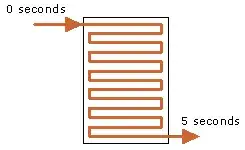Often when anchors in the studio are talking to reporters or people from a long distance, there is a small delay in the response, maybe one or two seconds.
This got me thinking, why is there such a delay?
I've observed the delay seems mostly independent of distance, from as little as half a second to as much as five seconds. Also, the transmission delays don't add up: you could send a broadcast around the Earth in about 500ms by pinging e.g. Japan from where I am, over the internet, and a video link is far simpler (with fixed latencies mostly.)
Perhaps it is a deliberate delay created by the reporter, so they have time to think about the answer to a question; or perhaps it is added by the studio so that in case a man-in-the-street interview goes a bit bad they can cut it off?
